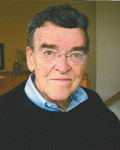February 2, 2017
Max’s Musings
Women Poets of the Past
Over the years, (your writer gets busy on a monthly deadline for Max’s Muse), women poets have been featured in more columns than I imagined. Going back 13 to 14 years is not impossible, but undone. I found three female poets featured in 2015, April, August and December. One in February of 2014 and one in December of 2012. Some years ago, I opened a poetry volume titled American Women Poets Of The Nineteenth Century published at Rutgers University in 1992 as part of a series on American Women Writers. Skill levels look similar to me. Style and content are not measurably different. Rhyme prevails, and a great deal of the verse comes to us in four line stanzas named quatrains. The poems of Maria White Lowell in this anthology are laid to friendship male and female. Thomas W. Higginson, a key friend and advisor to Emily Dickinson urged her to read poems by Lowell . She (Lowell) would be one of several woman encouraged by Dickenson to write and improve the poems they created and were to create. Emily wrote back to Higginson asking where she might find the poems, “or are they not for sight?’’ Found. Maria published some of her poems in 1843, marrying James Russel Lowell the next year. Her poems were published after her death at 32, first by her widower. And twice in the 20th Century.
All this leads to her poem titled,
An Opium Fantasy . .
Soft hangs the opiate in the brain,
And lulling soothes the edge of pain,
Till harshest sound, far off or near,
Sings floating in its mellow sphere.
What wakes me from my heavy dream?
Or am I still asleep?
Those long and soft vibrations seem
A slumberous charm to keep.
These stanzas are the initial ones with seven more to follow. Nothing is mentioned in notes of use of the poppies potential. We make no assumptions. Her life was short, and it should be mentioned she suffered the early deaths of three of her four children. Bred and raised into the upper class, she favored temperance and abolition.
Julia Ward Howe’s life spanned 1819 to 1910. She is most famous for her poem “Battle Hymn of the Republic.” These poets guided many other women who aspired to poetry. The politically active Howe helped found the American Women’s Suffrage Association in 1868. Alice Cary with sister Phoebe born and raised in Cincinnati, took a train to New York City and commenced a career in poetry and prose. Alice also wrote novels. Here is some work she thought about and transformed to a poem.
FAME
Fame guards the wreath we call a crown
With other wreaths of fire,
And dragging this or that man down
Will not raise you any higher!
Fear not too much the open seas,
Nor yet yourself misdoubt;
Clear the bright wake of geniuses ,
Then steadily steer out.
That wicked men in league should be
To push your craft aside,
Is not the hint of modesty,
But the poor conceit of pride.
Alice Cary is a single example of strong thought and direction many of these women fostered. That is not to say most of the poems in this volume showed skills as sweet and as romantic as one could suppose, a couple centuries in our past. Through the graces of poetry, elements of lives then are common to our own. March winds come next month. Join me here then.
Filed Under: History, Personal Growth
Trackback URL: https://www.50pluslife.com/2017/02/02/maxs-musings-33/trackback/



